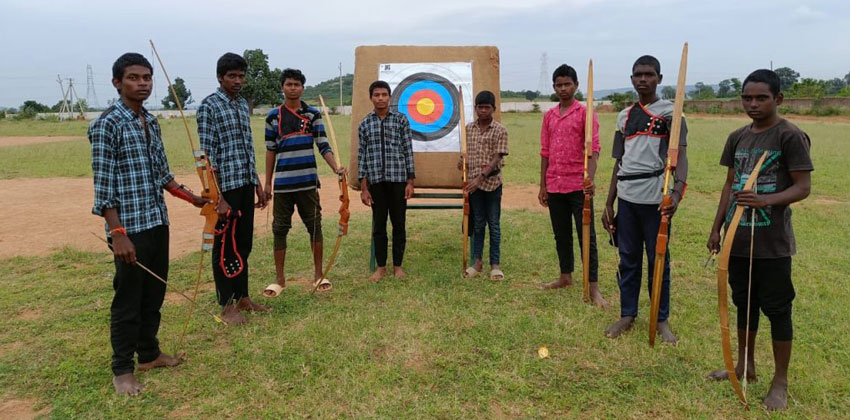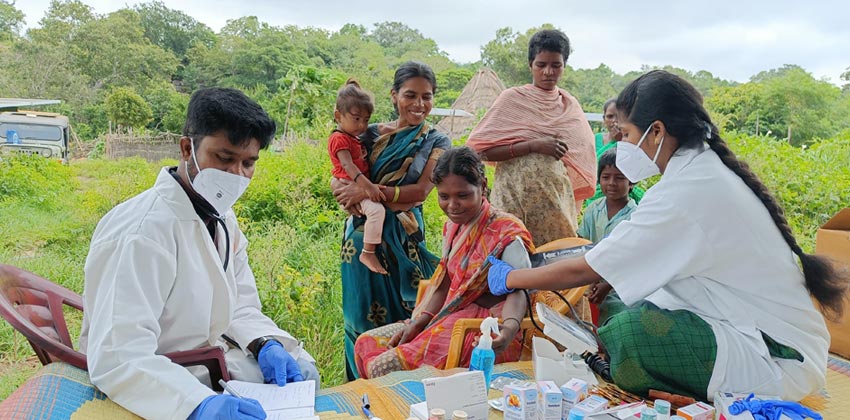A group of boys at the PTVG school in Amrabad, Telangana breaks into a run towards the playground excitedly shouting, “Baanalu estunnaru (They are firing arrows)”. The archery demonstration at this all-boys school on this overcast afternoon has attracted the interest of nearly all the students, each wanting to try their hand at it.
Archery is the most loved sport here at Upgraded Residential Junior College, a school for Particularly Vulnerable Tribal Groups under the Telangana Tribal Welfare Residential Educational Institutions Society. Unsurprising, given that most of the students here are from the Chenchu community. The Amrabad and NSTR forest expanse that connect Andhra Pradesh and Telangana via Srisailam are home to India’s largest Chenchu population.
People from this aboriginal tribe were traditionally hunter-gatherers, treading forests wielding a bow and arrow slung across their shoulders. The bow is made from bamboo, while the arrow has an iron head and its tail is adorned with feathers of the eagle: a prominent predator of the Amrabad and NSTR forest range.
While hunting animals in protected forest reserves is banned today, learning to build and use a bow and arrow is still an essential part of a Chenchu child’s upbringing, and the children are looking at the skill from a fresh perspective – as the sport of archery.
At this PVTG boys’ school in Amrabad, over 50 students, including Lakshmanudu, S Raju, and G Siva have expressed an interest in being trained in archery. The group of 12-15 year olds is practising target shooting and discussing the difference between their traditional bows and the professional ones (the former is smaller).
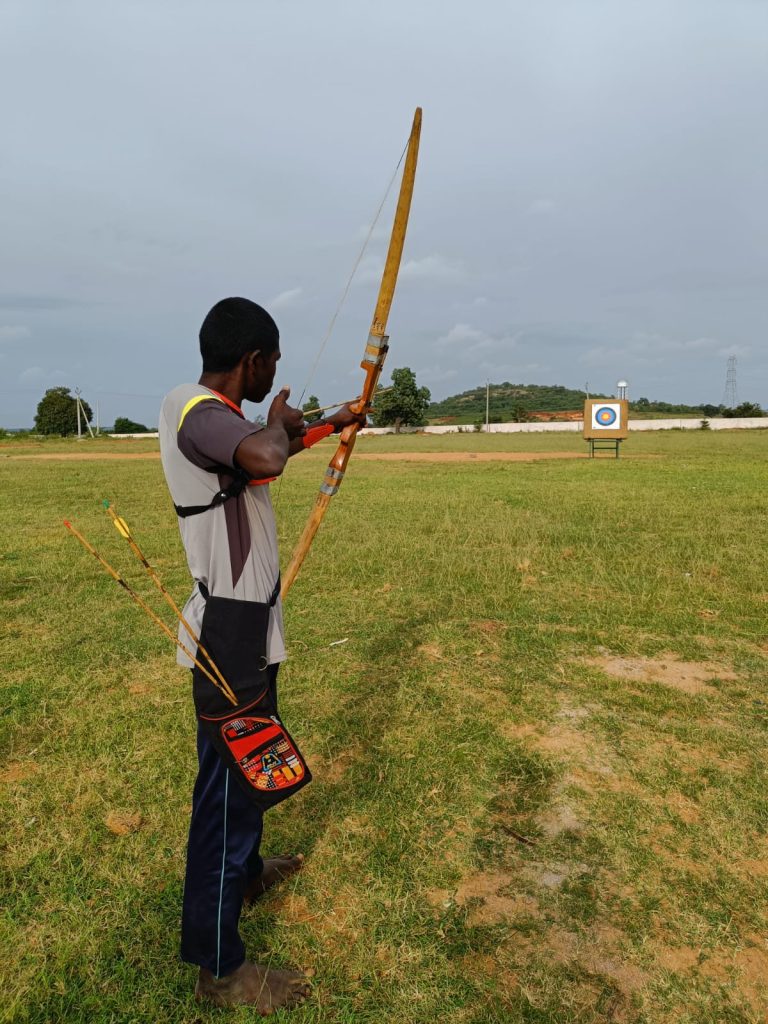
“Chenchu children have grown up watching their fathers and grandfathers firing arrows. They have naturally inherited this knowledge,” says Udaya Kumar, a Chenchu tribesman who has been teaching English at the PVTG school for the past 10 years. “Recognising this, in 2018, the Telangana government started archery classes for all PVTG schools here.”
Schools under the TTW Residential Educational Institutions Society, known as Gurukulam schools, started post-school archery classes in 2018. Every day from 3.30 pm to 4.30 pm, the students would learn under an archery coach, also from the Chenchu community, with professional archery kits: bows, arrows, chest and shoulder pads, gloves and target boards given to them by the government.
However, this lasted only till 2019. “The classes were shifted to Hyderabad due to lack of coaches and the relatively higher dropout rate here,” says N Padmavati, principal of the Amrabad PVTG school.
How archery could bring prosperity
In nearby Madhavanpalle, Dasari Anjaiah and C Lingaiah are both well-known archers, who have taught as instructors in different schools. From 2009 to 2011, Anjaiah worked as an archery instructor at a school in Sunnipenta. His skills with the bow and arrow were first recognized as a 15-year-old in 2003, at a local archery competition held by the government. “It was a district level competition, and I won the first prize,” he recalls. “After that, we were sent to a state-level competition in Nagarkurnool, and then to the nationals in Rajasthan.” From there on, he would regularly participate in such competitions held either by the police department, forest department or NGOs such as Vanavasi Kalyan Parishad.
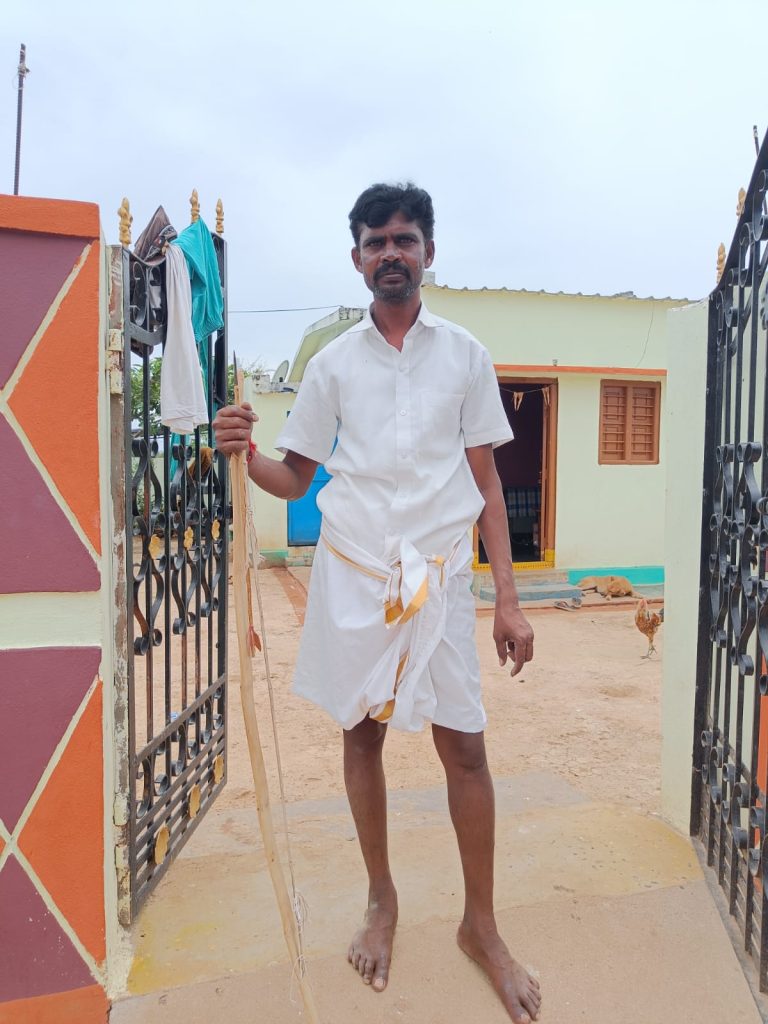
He credits the archery competitions for getting to travel to states such as Rajasthan and Himachal Pradesh – a feat unusual for people from his tribe, many of whom do not even step outside the forest penta they were born and raised in.
“Once I made it to the nationals, things started looking up for me,” says Anjaiah. “I got a job as an archery trainer with the government, after which my family got put up for the sarpanch position in our village.”
“Many of the students I trained went on to receive government jobs through sports quota. Archery could definitely be a way ahead for the Chenchu community,” he continues. His brother-in-law, Lingaiah today works as a record assistant in the College of Excellency, Hayyathnagar, Hyderabad – a job he secured in 2018 through sports quota after winning national level archery competitions.
In Mannanur, C Lakshmaiah attests to the same trajectory. “When I was a watcher for the forest department, I represented the Mannanur range four times consecutively, from 2015 to 2019, and won the first prize each time. It got me recognition within the department,” he says.
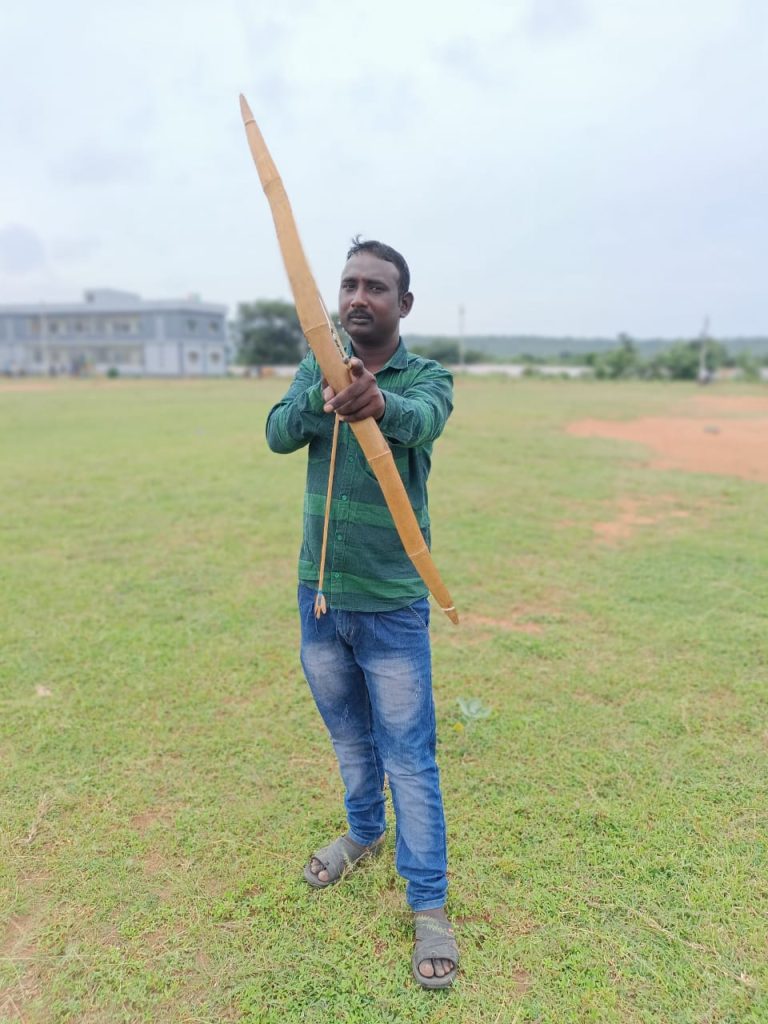
Need for more local mini-academies
As Anjaiah fashions a bowstring out of bamboo, thinning the stalk with his knife, his 5-year-old daughter runs circles around him, fetching him his arrows and more bamboo.
“Archery is in our blood. My parents taught me, my grandparents taught them. For us, it would be unthinkable to venture out in the forest without these three things for our self-defence: the bow and arrow, the knife, and our pet dog,” he says.
Skills are not always handed down within a family – often, the entire penta will function as a unit, with the elders training the young. Across the forest in a village Yerragondlapalem in NSTR, Bommani Gopala, in his 70s, is playfully berating 13-year-old Damsani Anjanna for missing his mark. He snatches away the child’s bow to show him the correct angle at which it should be held, and the strength with which the string should be pulled.
“I learnt how to shoot when I was 4 years old, from an older friend; we would play with wooden arrows before leveling up to the iron tipped ones,” says Anjanna.
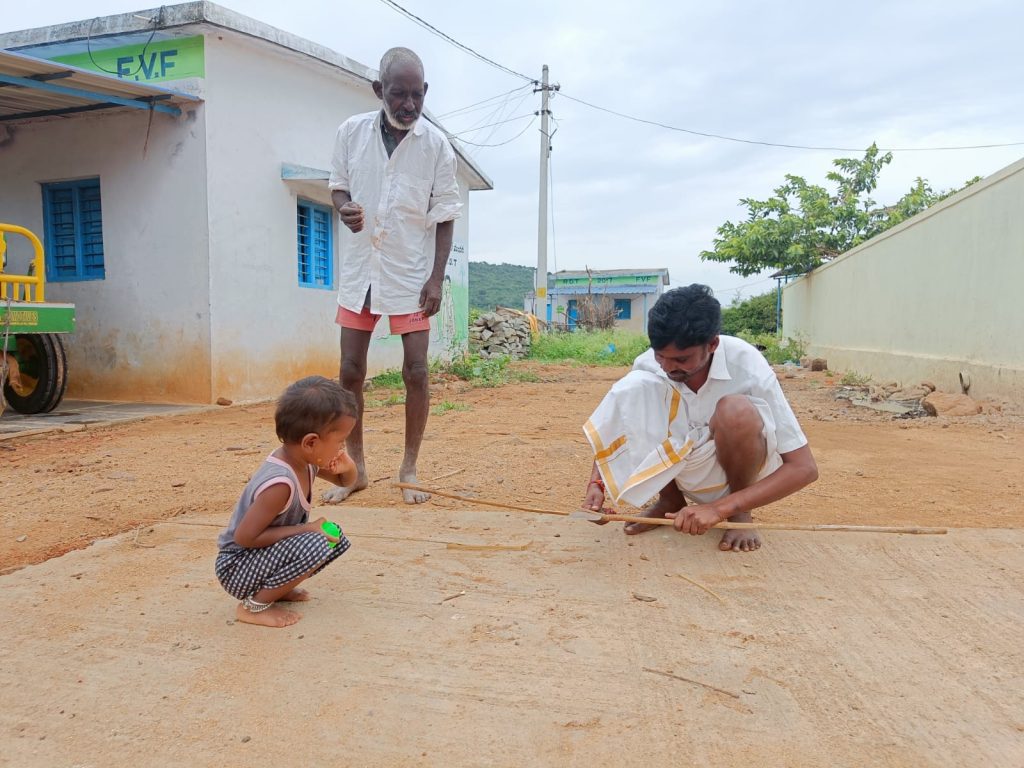
Despite having this know-how since childhood, the Chenchus do not think of archery as a ‘talent’ or a ‘skill’. “This is our lifestyle, this is how we have grown up,” says Lakshmaiah.
However, the children of this generation are realising its potential. While 15-year-old T Mallikarjun from Achampet looks at archery as a way out of alcoholism rampant among the men of his village, 18-year-old C Veerayya from Amrabad considers it to be the road to fame; he has already represented his village in local competitions.
This road is not without challenges: a lack of enough role models, awareness of archery competitions and sports quotas prove limiting. And then there is the living cost at archery camps in academies far from their villages, even if the training there is free. Yet, this has not dampened the children’s spirits.
“My father has promised me that if sports take me somewhere good, he is ready to send me. However far it may be, he will support me, I know, “ says Lakshmanudu.
